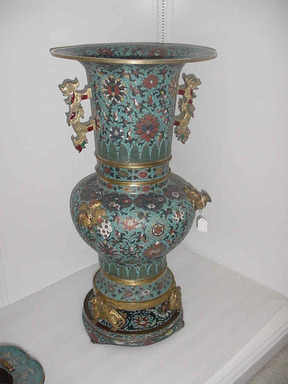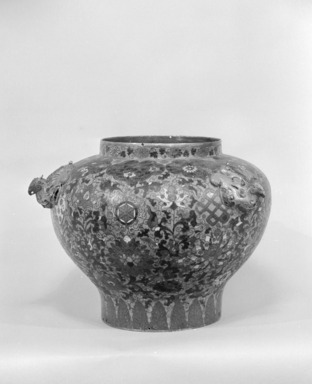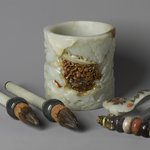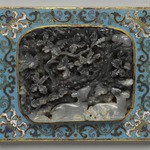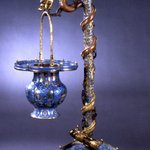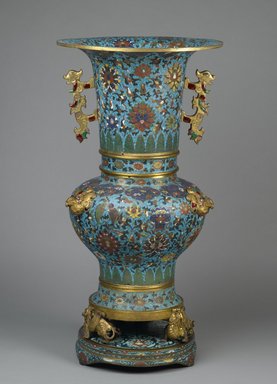

Grand Imperial Vase, 17th–mid 18th century. Cloisonné enamel on copper alloy, gilt bronze, semi-precious stones, 41 1/2 x 22 in. (105.4 x 55.9 cm). Brooklyn Museum, Gift of Samuel P. Avery, 09.933.2. Creative Commons-BY (Photo: Brooklyn Museum, 09.933.2_PS2.jpg)

Grand Imperial Vase, 17th–mid 18th century. Cloisonné enamel on copper alloy, gilt bronze, semi-precious stones, 41 1/2 x 22 in. (105.4 x 55.9 cm). Brooklyn Museum, Gift of Samuel P. Avery, 09.933.2. Creative Commons-BY (Photo: Brooklyn Museum, 09.933.2_detail01_PS2.jpg)

Grand Imperial Vase, 17th–mid 18th century. Cloisonné enamel on copper alloy, gilt bronze, semi-precious stones, 41 1/2 x 22 in. (105.4 x 55.9 cm). Brooklyn Museum, Gift of Samuel P. Avery, 09.933.2. Creative Commons-BY (Photo: Brooklyn Museum, 09.933.2_detail02_PS2.jpg)
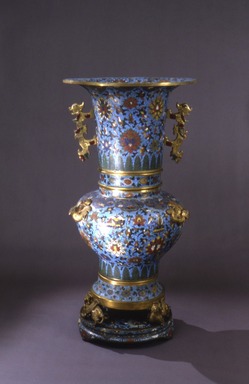
Grand Imperial Vase, 17th–mid 18th century. Cloisonné enamel on copper alloy, gilt bronze, semi-precious stones, 41 1/2 x 22 in. (105.4 x 55.9 cm). Brooklyn Museum, Gift of Samuel P. Avery, 09.933.2. Creative Commons-BY (Photo: Brooklyn Museum, CUR.09.933.2.jpg)

Grand Imperial Vase, 17th–mid 18th century. Cloisonné enamel on copper alloy, gilt bronze, semi-precious stones, 41 1/2 x 22 in. (105.4 x 55.9 cm). Brooklyn Museum, Gift of Samuel P. Avery, 09.933.2. Creative Commons-BY (Photo: Brooklyn Museum, CUR.09.933.2_detail01.jpg)

Grand Imperial Vase, 17th–mid 18th century. Cloisonné enamel on copper alloy, gilt bronze, semi-precious stones, 41 1/2 x 22 in. (105.4 x 55.9 cm). Brooklyn Museum, Gift of Samuel P. Avery, 09.933.2. Creative Commons-BY (Photo: Brooklyn Museum, CUR.09.933.2_detail02.jpg)
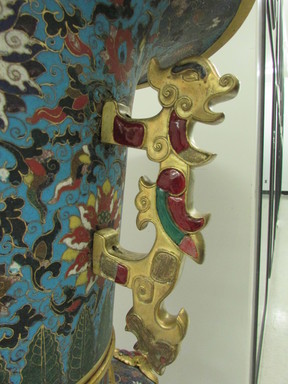
Grand Imperial Vase, 17th–mid 18th century. Cloisonné enamel on copper alloy, gilt bronze, semi-precious stones, 41 1/2 x 22 in. (105.4 x 55.9 cm). Brooklyn Museum, Gift of Samuel P. Avery, 09.933.2. Creative Commons-BY (Photo: Brooklyn Museum, CUR.09.933.2_detail03.jpg)

Grand Imperial Vase, 17th–mid 18th century. Cloisonné enamel on copper alloy, gilt bronze, semi-precious stones, 41 1/2 x 22 in. (105.4 x 55.9 cm). Brooklyn Museum, Gift of Samuel P. Avery, 09.933.2. Creative Commons-BY (Photo: Brooklyn Museum, CUR.09.933.2_detail04.jpg)

Grand Imperial Vase, 17th–mid 18th century. Cloisonné enamel on copper alloy, gilt bronze, semi-precious stones, 41 1/2 x 22 in. (105.4 x 55.9 cm). Brooklyn Museum, Gift of Samuel P. Avery, 09.933.2. Creative Commons-BY (Photo: Brooklyn Museum, CUR.09.933.2_stand.jpg)
Grand Imperial Vase
Asian Art

